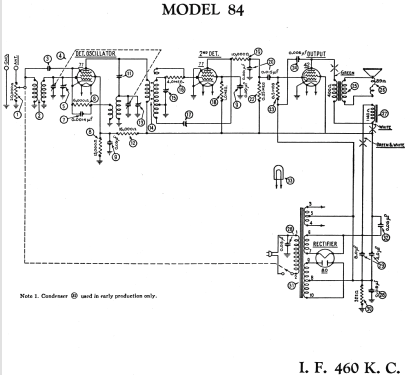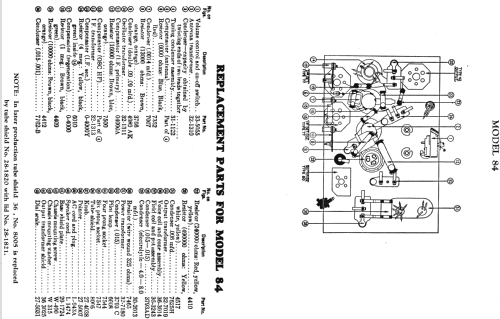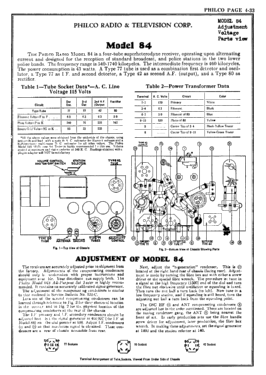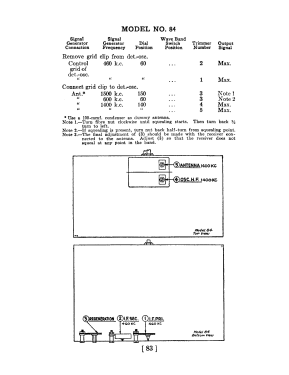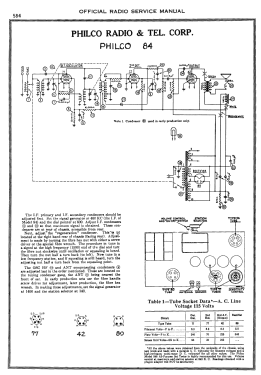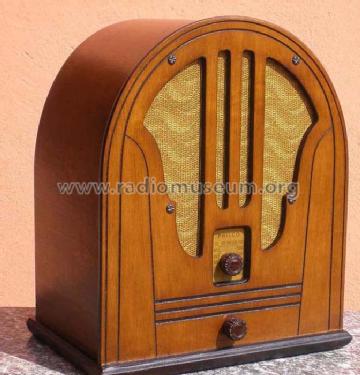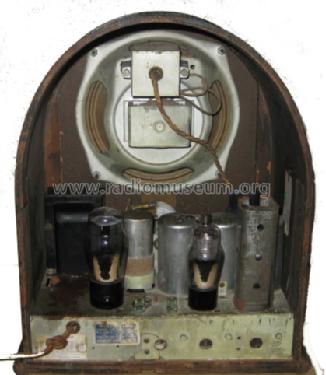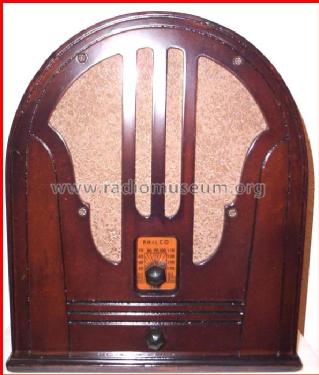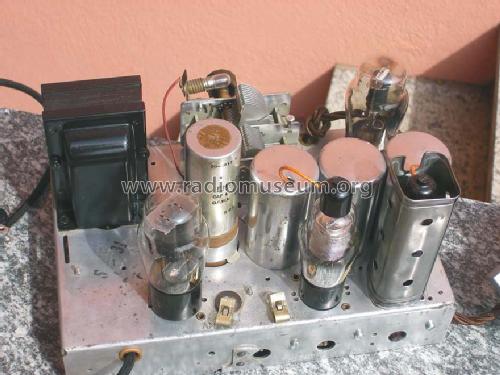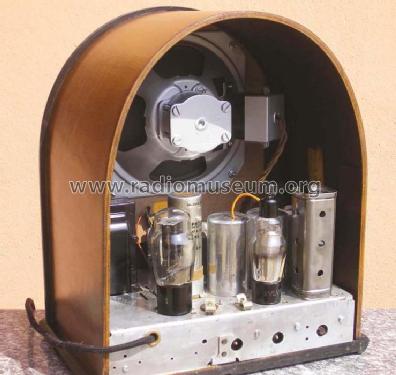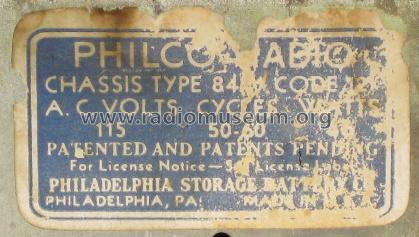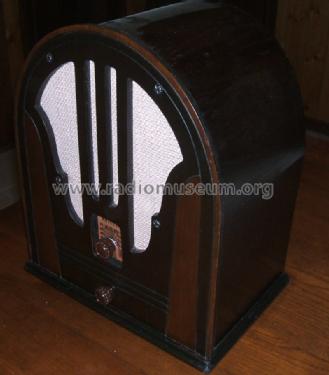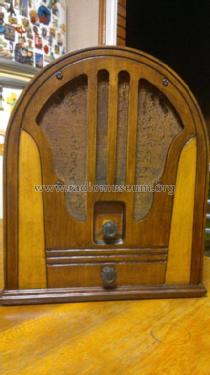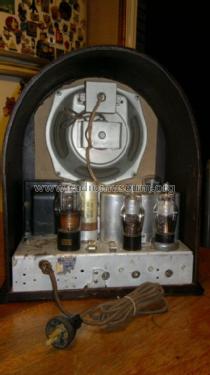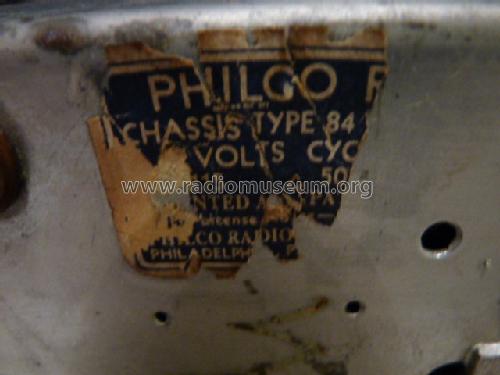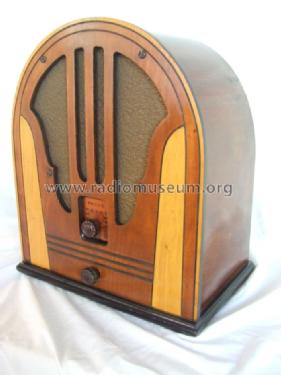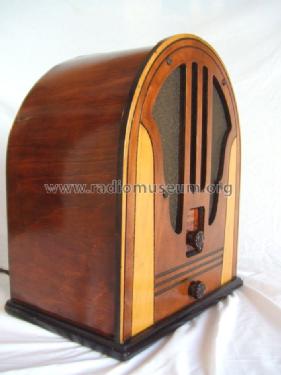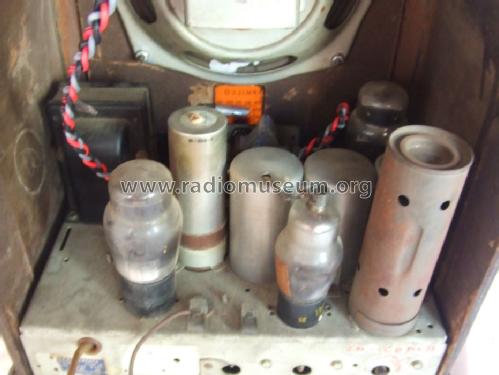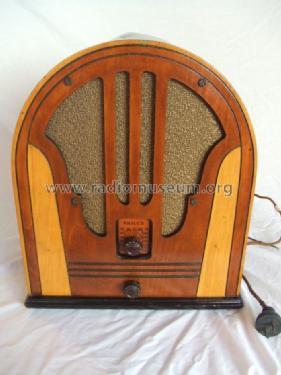84B Middle
Philco, Philadelphia Stg. Batt. Co.; USA
- Land
- USA
- Hersteller / Marke
- Philco, Philadelphia Stg. Batt. Co.; USA
- Jahr
- 1935
- Kategorie
- Rundfunkempfänger (Radio - oder Tuner nach WW2)
- Radiomuseum.org ID
- 139539
Klicken Sie auf den Schaltplanausschnitt, um diesen kostenlos als Dokument anzufordern.
- Anzahl Röhren
- 4
- Hauptprinzip
- Superhet allgemein; ZF/IF 460 kHz
- Wellenbereiche
- Mittelwelle, keine anderen.
- Betriebsart / Volt
- Wechselstromspeisung / 115 Volt
- Lautsprecher
- Dynamischer LS, mit Erregerspule (elektrodynamisch)
- Material
- Gerät mit Holzgehäuse
- von Radiomuseum.org
- Modell: 84B [Middle] - Philco, Philadelphia Stg. Batt
- Form
- Tischgerät, Kathedralenform (Hochformat, bogig bis spitzbogig, nicht nur runde Ecken).
- Abmessungen (BHT)
- 305 x 360 x 200 mm / 12 x 14.2 x 7.9 inch
- Bemerkung
- Model 84B was the third of a series (models 80B, 81B, and 84B) of low cost 4-tube cathedrals that used a regenerative combined IF/detector stage to maximize sensitivity with very few components.
The early version (1934) had a round speaker opening with three vertical bars. The middle version (1935) had a lyre-shaped opening with three vertical bars. The late version (1936) had a continuous arch-shape extending upward from the base, and an oval speaker opening with five mostly vertical bars.
Model 84B continued onward for one more year as model 37-84B, with two more cabinet styles, and a new tube lineup (but still using a similar circuit).
- Originalpreis
- 20.00 $
- Datenherkunft
- Philco Radio 1928-1942
- Schaltungsnachweis
- Rider's Perpetual, Volume 4 = ca. 1934 and before
- Literatur/Schema (1)
- Philco 1928-36 Wiring Diagrams, Parts Lists, and Essential Service Data
- Literatur/Schema (2)
- Cathedral & Tombstone Radios (page 194.)
- Autor
- Modellseite von Thomas Albrecht angelegt. Siehe bei "Änderungsvorschlag" für weitere Mitarbeit.
- Weitere Modelle
-
Hier finden Sie 4120 Modelle, davon 2227 mit Bildern und 3768 mit Schaltbildern.
Alle gelisteten Radios usw. von Philco, Philadelphia Stg. Batt. Co.; USA
Sammlungen
Das Modell 84B befindet sich in den Sammlungen folgender Mitglieder.
Forumsbeiträge zum Modell: Philco, Philadelphia: 84B
Threads: 1 | Posts: 8
Salve ai soci , sono alle prese con un problema di Ronzio su questo ricevitore . nonostante abbia gia sostituito gli elettrolitici il ronzio resta. Ho notato che mettendo a massa la griglia della finale ( 42 ) il ronzio smette , quindi presumo che il difetto sia da reputarsi nella zona finale audio. Un'altra cosa che mi sembra anomala e'la tensione troppo bassa sull'anodica e sulla griglia schermo della 77 nella sezione MF ovvero 50sull'anodica e 35 sullo schermo , nn so anche questo possa portare il ronzio ho sostituito i vari componenti in quella zona ma nulla e' cambiato , se qualcuno puo indicarmi come provare a risolvere il problema le sarei grato . Distinti saluti
GABRIELE,
Gabriele Seccia, 08.Dec.11
